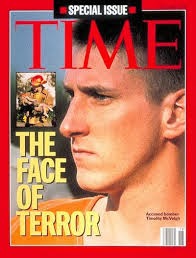Can You Tell The Stunt-double From The Star? Probably not.
 |
Source: www.kickvick.com
Johnny Depp and stunt double Tony Angelotti, on the set of “Pirates of the Caribbean” |
How we perceive things is fascinating. Interview two people who see the same incident from the same perspective, they will give different versions of what happened, sometimes radically different.
Compare the memories of two people involved together some years earlier, and each will have a different version of the event. Sometimes one has a vivid and clear memory of the event while the other has no memory of the event.
Weird? Not really. Our brain is rather imperfect chemical computer that takes shortcuts and has lazy practices to preserve energy. Which is good, because it accounts for so much of the differences in our personalities. And as everyone knows, it is imperfection that makes us human, and why developing characters for a work of fiction is so much fun. Especially when the character decides to take over their own lives and push your story in unseen directions.
Here's a story about one of the brains lazy tricks that preserves our very sanity:
Why we can't tell a Hollywood
heartthrob from his stunt double
 |
| Carrie Fisher and her stunt double Sandi Gross, on the set of “Star Wars: Episode VI – Return of the Jedi” |
Johnny Depp has an unforgettable face. Tony Angelotti, his stunt double in 'Pirates of the Caribbean,' does not. So why is it that when they're swashbuckling on screen, audiences worldwide see them both as the same person? Scientists have pinpointed the brain mechanism by which we latch on to a particular face even when it changes.
Researchers have pinpointed the brain mechanism by which we latch on to a particular face even when it changes. While it may seem as though our brain is tricking us into morphing, say, an actor with his stunt double, this "perceptual pull" is actually a survival mechanism, giving us a sense of stability, familiarity and continuity in what would otherwise be a visually chaotic world, researchers point out.
 |
| Julie Newmar and her stunt double on the set of “Batman” |
"Our visual system loses sensitivity to stunt doubles in movies, but that's a small price to pay for perceiving our spouse's identity as stable," said David Whitney, a professor of psychology at UC Berkeley and senior author of the study.
Previous research in Whitney's lab established the existence of a "Continuity Field" in which we visually meld similar objects seen within a 15-second time frame. For example, that study helped explain why we miss movie-mistake jump cuts, such as Harry Potter's T-shirt abruptly changing from a crewneck into a henley shirt in the "Order of the Phoenix."
This latest study builds on that by testing how a Continuity Field applies to our observation and recognition of faces, arguably one of the most important human social and perceptual functions, researchers said.
 |
| Natalie Portman and her stunt double Sarah Lane, on the set of “Black Swan” |
"Without the extraordinary ability to recognize faces, many social functions would be lost.Imagine picking up your child at school and not being able to recognize which kid is yours," Whitney said. "Fortunately, this type of face blindness is rare. What is common, however, are changes in viewpoint, noise, blur, and lighting changes that could cause faces to appear very different from moment to moment. Our results suggest that the visual system is biased against such wavering perception in favor of continuity."
To test this phenomenon, study participants viewed dozens of faces that varied in similarity. Each six seconds, a "target face" flashed on the computer screen for less than a second, followed by a series of faces that morphed with each click of an arrow key from one to the next. Participants clicked through the faces until they found the one that most closely matched the "target face." Time and again, the face they picked was a combination of the two most recently seen target faces.
 |
| Suggested reading |
In a follow up experiment, the faces were viewed from different angles instead of frontal views to ensure that study participants were not latching on to a particular feature, say, bushy eyebrows or a distinct shadow across a cheekbone, but actually recognizing the entire visage.
"Sequential faces that are somewhat similar will display a much more striking family resemblance than is actually present, simply because of this Continuity Field for faces," Liberman said.
Related stories:
- Aggressive Sports and Domestic Violence
- Are Dogs 'Kids?'
- Brains Process the Pain of Villains More Than the Pain of People We Like
- Change, Conflict Cue Memories of Life's Milestones
- Do Patients in a Vegetative State Recognize Loved Ones?
- Expansive postures = state of power = sign of dishonest behavior
- If You're Not Looking for It, You Probably Won't See It
- Intelligence Is Not a Remedy for Racism
- It's Better to Be Confident Than Correct
- Kill One or Kill Five? How People Respond to Moral Dilemmas
- Nearly 7 in 10 Americans Are On Prescription Drugs
- Nightmares Create Feelings of Sadness, Confusion, Guilt, and Disgust ~ Not Fear
- People Remember Unattractive Faces More Than Attractive Ones
- The Small But Important Difference Between Apes and Humans
- Sudden Wealth makes People Conservative and Less Egalitarian
- Touch May Alleviate Fear for People with Low Self-Esteem
- Weighed Down by Guilt: Research Shows It's More Than a Metaphor
- Yes, People Can Learn Compassion
- Your "Sherlock Holmes" Character: What Pupil Size Says About People Facing a Decision
* * * * *
Story Source: Materials provided by University of California - Berkeley, original article written by Yasmin Anwar. Alina Liberman, Jason Fischer, David Whitney. Serial Dependence in the Perception of Faces. Current Biology, October 2014
Comments
Post a Comment